As we told in our previous articles in this series, we had the opportunity to create a game inspired by “The Hobbit,” to be published as a new entry in Ares’ “War of the Ring” line. And we decided to design the game to be a tactical-level simulation of The Battle of Five Armies, using a modified version of the game engine we first used in the “Battles of the Third Age” (BotTA) battle games – itself a modified version of the game engine of “War of the Ring” (WotR).
Most of you are probably familiar with the War of the Ring mechanics. WotR uses, as its main engine, two pools of Action dice, which generate a set of choices each turn, from which each player chooses their actions. No matter what strategy you have in mind, you must find a compromise between your “master plan,” and your opportunities and resources, represented by the roll of your action dice. The dice are different for the Shadow and the Free Peoples - both in the choices they offer and in their number - so this creates a very asymmetrical game. This system is “almost” universal – with modifications, we previously applied it to other strategy games we designed in different settings, such as our “Age of Conan” board game.
We used the same set of action dice in War of the Ring and in the Battles game, but the effect of the actions is subtly different. For example, the “Crown” die result represents “Mustering Troops” in both WotR and in BotTA – but in the former it allows advancement on the political track of nations, while in the latter, it allows rallying shaken units after a hard battle. In both games, the result also enables players to bring fresh troops to the battlefield.
The other game engine – secondary from the point of view of mechanics, but very important to properly recreate the narrative and theme – is represented by Event cards. Event cards allow us to introduce, without making the rules overly complex, a wide range of events from the books that it would be very difficult to recreate with the action dice alone. Furthermore, cards are hidden, so they add a level of uncertainty impossible to get using only the action dice. They also increase the range of players’ choices – certain action dice results also allow the players to use the action cards, and the effect of Event cards is stronger than normal actions. Last, they add an important (and tense) moment of decision-making, as they are dual-use: you can play them to perform an action or to influence the outcome of a combat – and very often deciding which of the two uses is better is no easy task!
In WotR, we have two decks of Event cards for each player – one related to Characters, the other one to Armies. In the BotTA game system, we have one deck which is specific to each player (the “Story deck”) with cards strongly related to the storyline; we also have one deck of “generic Events,” used by both players; and one deck of cards, called “Fate cards,” which generate special events connected to the concept of Fate – more on this later!
The generic Event deck is the same in all the games using the BotTA system – it mostly features improved effects for the “normal” actions, such as moving your armies faster, rallying better, and so on. While the Story and Fate decks were different in Rohan and Minas Tirith, as they were used to recreate all sorts of episodes from the book pertaining to each battle, we planned to make them different in The Battle of Five Armies.
The third mechanic featured in BotTA is not used in WotR: Fate. In Tolkien’s works, Fate (or Providence, if you prefer), is an important presence. The battle between good and evil is fought on a moral level, not just on the battlefield. Ultimately there is guidance from above that rewards good deeds and sacrifices, and punishes the evil-doers.
This is not easy to represent in a game, of course, but our Fate mechanic attempts to recreate the feeling that ultimately, if good holds on in the face of evil, it will triumph. In game terms, this is achieved using a Fate Track mechanic, which determines the end of the game (and the victory of the Free Peoples). The progress of the Fate Track is not regular, but is influenced by players' choices.
The other specific feature of the BotTA system is the way combat is handled. In WotR, combat is very streamlined, as we wanted combat to be a swift resolution of strategic operations, without slowing down for too many details. In Rohan and Minas Tirith, we wanted to recreate the clash on a more tactical level, so it was important to introduce elements such as special abilities for different kinds of units, tactical maneuver choices, and the influence of terrain features.
The way all these elements are featured in the game is still compatible with our main philosophy – to add what is needed to create interesting decisions, without burdening the system with unnecessary details. Essentially, unit abilities work much the same as the combat effect of Event cards, and are an alternative to using an Event card; certain maneuver choices (such as re-dressing your battle line) are also used as an alternative to playing an Event. Unlike Events, using unit abilities is not automatic, but success is more likely the higher the number of units of that type in your army. An army with different units has “combined arms,” with multiple abilities to leverage. An army focused on one or two types of units has a more limited range of skills to choose from, but it’s more likely to succeed when using them.
We found that most of these concepts were still valid when applied to The Battle of Five Armies – but should we just add a “new skin” to the engine, or were there more ways to improve it, both from thematic and gameplay points of view? We believed it was possible, and was the right thing to do to make the game really exciting. So, we started to work on the hardest part...
To be continued...

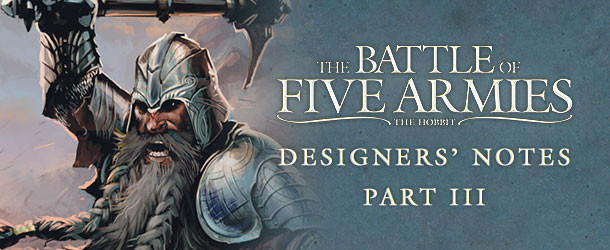
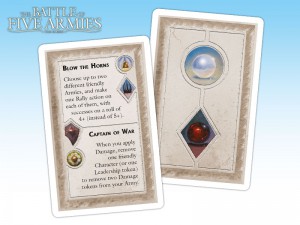
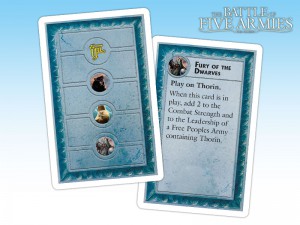
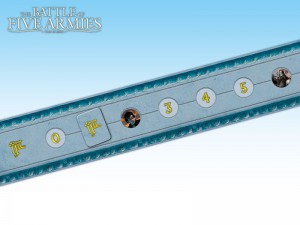
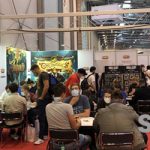

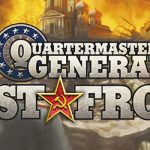





Follow Us on